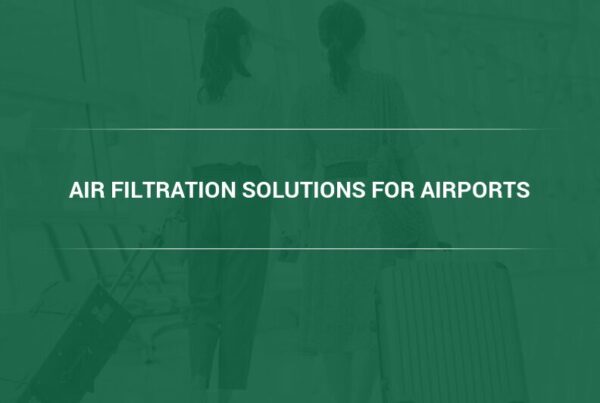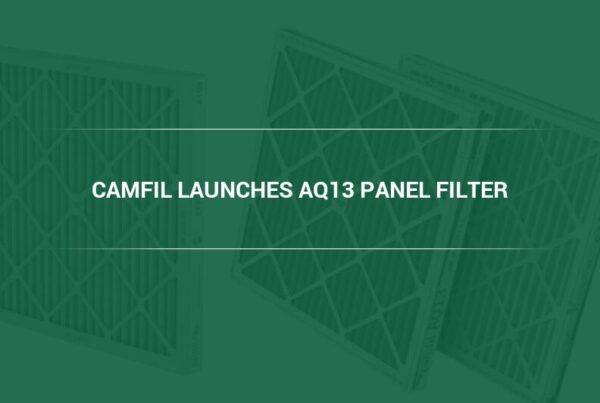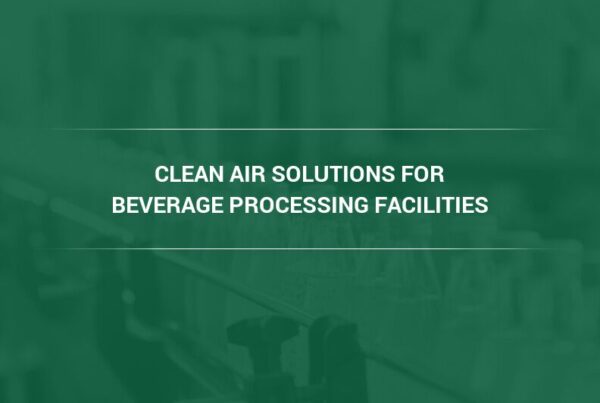Data centers are the foundation of the digital world, hosting vast amounts of data and ensuring uninterrupted services for millions of users. With the rapid advancement of AI, the demand for data centers is skyrocketing, making air quality management more critical than ever.
Why Molecular Air Filtration for Data Centers Will Grow
As AI-powered applications require more computational power, data centers are expanding rapidly, increasing their reliance on backup generators, high-density servers, and complex cooling systems. These factors contribute to the accumulation of molecular contaminants, which can cause corrosion, downtime, and equipment failures if not properly managed.
However, an invisible threat lurks within these critical environments—molecular contaminants. These airborne pollutants, including nitrogen dioxide and ozone, are 1,000 times smaller than what HEPA filters can capture. Left unchecked, they corrode sensitive electronic equipment, leading to costly repairs and service disruptions.
To combat this, Camfil USA has developed cutting-edge molecular air filtration solutions, including the AirImage COR, a real-time corrosion detection system, and the CityCarb I, a dual-function molecular filter.
This blog explores the five-video series on Molecular Air Filtration for Data Centers, diving deep into the dangers of gaseous contaminants and the solutions Camfil provides.
📺 Watch the Full Playlist Here: Molecular Air Filtration for Data Centers
1. Identifying Corrosion Dangers in Data Centers
📺 Watch Video: Camfil’s AirImage-COR Identifies Corrosion Dangers
Understanding the Threat
Most people associate air filtration with removing dust and particulate matter, but gaseous contaminants pose an equal risk in data centers. These molecular pollutants are invisible, odorless, and highly reactive, leading to electronic corrosion over time.
How AirImage-COR Helps
Camfil’s AirImage-COR is a real-time corrosion monitoring system that integrates seamlessly with building management systems (BMS). It provides instant readings on corrosive gas levels, allowing operators to take proactive measures before damage occurs.
✔ Real-time detection of molecular contaminants
✔ Seamless integration with existing infrastructure
✔ Actionable insights for corrosion prevention
If AirImage-COR detects high levels of corrosive gases, Camfil offers advanced molecular filtration solutions to remove them effectively.
2. What Are Particulate Matter and Gaseous Contaminants?
📺 Watch Video: Understanding Airborne Pollutants in Data Centers
Particulate Matter vs. Molecular Contaminants
Air pollution comes in two main forms:
| Type | Description | Common Examples | Filtration Solution |
| Particulate Matter (PM) | Solid or liquid particles suspended in air | Dust, dirt, soot, PM1, PM2.5, PM10 | HEPA & MERV A-rated filters |
| Molecular Contaminants | Gaseous pollutants, much smaller than PM | Ozone, nitrogen dioxide, sulfur dioxide | Molecular filtration (adsorption) |
Why Molecular Contaminants Matter
While traditional air filters can capture dust and airborne particles, they cannot remove molecular contaminants. In data centers, these gases accumulate undetected, accelerating corrosion and increasing the risk of equipment failure.
3. How Corrosion Damages Electronic Equipment
📺 Watch Video: The Hidden Dangers of Corrosion
What Is Corrosion?
Corrosion occurs when reactive gases interact with metal surfaces, forming oxidation layers that degrade electronic performance.
A well-known example is the Statue of Liberty, which is slowly turning green due to copper corrosion over decades. In data centers, this process happens much faster, potentially within months!
How AirImage-COR Measures Corrosion Risk
The AirImage-COR assigns a G-Rating based on the severity of corrosive gas exposure:
| Rating | Corrosion Risk | Impact on Equipment |
| G1 | Minimal risk | No immediate action needed |
| G2 | Gases detected | Source should be identified |
| G3 | High risk | Likely equipment damage |
| GX | Extreme levels | Only specialized equipment survives |
By using real-time monitoring, data centers can help prevent failures before they happen.
4. Adsorption vs. Absorption: How Molecular Filtration Works
📺 Watch Video: Adsorption or Absorption?
How Camfil Uses Adsorption Technology
Camfil’s molecular filtration solutions use activated carbon, a highly porous material that traps and removes gaseous contaminants from the air. This ensures data centers are protected from corrosive gases like ozone and nitrogen dioxide.
5. Can You Capture a Molecule? The CityCarb I Solution
📺 Watch Video: CityCarb I – The Ultimate Molecular Filtration Solution
Introducing CityCarb I: A Dual-Function Filter
When data centers need reliable molecular filtration, Camfil’s CityCarb I is the go-to solution.
✔ High MERV rating: Captures particulate matter (PM2.5, PM10)
✔ Molecular filtration: Removes corrosive gases
✔ Extended lifespan: Reduces replacement costs
Maximizing Filter Performance with AirImage COR
By pairing CityCarb I with AirImage-COR, data centers can:
✅ Detect when molecular filters need replacing
✅ Prevent premature wear on equipment
✅ Ensure continuous air quality monitoring
Conclusion: Future-Proofing Data Centers with Molecular Filtration
Corrosion is an invisible yet devastating threat to data centers. While HEPA and MERV filters are effective against particulate matter, they do not stop gaseous pollutants.
By implementing Camfil’s AirImage-COR and CityCarb I, data centers can:
✔ Monitor and detect corrosive gases in real-time
✔ Take preventive action before damage occurs
✔ Extend the lifespan of critical electronic equipment
✔ Reduce maintenance costs and downtime risks
📺 Watch the Full Video Playlist Here:Molecular Air Filtration for Data Centers
Want to learn more? Visit Camfil’s website for more information on molecular filtration solutions!
Related: See our latest blog by Camfil Air filters Canada: The crucial role of air filtration in data centres | Camfil Air Filters Canada



